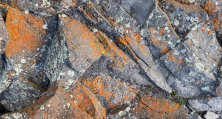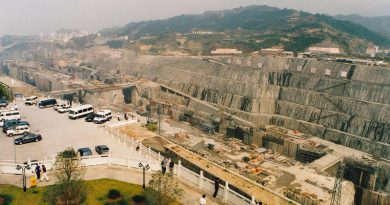Rare Earth Minerals
Known as “industrial gold”, minerals labelled “rare earths” have become vital production elements to many critical and growing industries such as mobile phones, televisions, computers, wind turbines, sonar panels and lighting.
The military uses them to help construct missile guidance systems, lasers, ships and submarines. Their magnetic property are important in the construction of hard drives for motors in hybrid and electric vehicles and for their braking systems.
There are 17 metals categorised as ‘rare earth’ including cerium, neodymium, terbium and erbium.
What are Rare Earth Minerals?
Rare earth elements are relatively plentiful in the earth’s crust and due to their geochemical properties, rare earth elements are quite dispersed. This means they are not often found in concentrated enough clusters to make them viable to mine. It was the scarcity of these minerals that has led to them being called rare earths.
When mined, rare earths are high lustre metals which are typically silver, silver-white, or grey in colour. When exposed to the air they tarnish and form oxide compounds. Rare earths, when found in a large enough cluster, are actually a ‘cocktail’ of elements which have to be separated into individual elements before they can be used commercially. Rare earths tend to be mined by using open pit methods.
What are Rare Earths used for ?
Before 1965 there was relatively little demand for rare earth elements. At that time, most of the world’s supply was being produced from deposits in India and Brazil. In the 1950s, South Africa became the leading producer from rare earth bearing monazite deposits. At that time, the Mountain Pass Mine in California was producing minor amounts of rare earth oxides.
The demand for rare earth elements saw its first explosion in the mid-1960s, as the first colour television sets were entering the market. Europium was the essential material for producing the color images.
In the last 50 years, distinct metals such as copper, nickel, aluminium have been joined by critical earth elements found in electric vehicle batteries such as lithium and cobalt. Both are recyclable and can be reused over and over repeatedly.
Rare Earth elements, such as cobalt and neodymium, are highly valued in modern, technology-driven societies for their ability to create magnets with unique characteristics. These elements are utilised in a wide variety of consumer and industrial applications from smartphones and televisions to electric cars. Demand for these metals is increasing as renewable energy becomes more important across the globe. Rare earths like neodymium and praseodymium, which are important in clean energy applications and high-tech industries, are in the spotlight, particularly as electric vehicles and hybrid cars gain popularity.
They also are critical to the U.S. military, given their use in the manufacture of night vision goggles, precision-guided weapons, communications equipment and GPS equipment.
Where are Rare Earths found?
Rare earths are relatively abundant in the Earth’s crust, but discovered minable concentrations are less common than for most other ores. They elements are contained primarily in bastnäsite and monazite. Bastnäsite deposits in China and the United States constitute the largest percentage of the world’s rare-earth economic resources, while monazite deposits in Australia, Brazil, China, India, Malaysia, South Africa, Sri Lanka, Thailand, and the United States constitute the second largest segment.
China has about 37% of the world’s reserves of rare earth metals, while Brazil is second at 18% and Russia is third at 15%. Meanwhile, the U.S. has only about 1%, per the same source.
Who Produces Rare Earth Minerals?
China began producing notable amounts of rare earth oxides in the early 1980s and became the world’s leading producer in the early 1990s. Through the 1990s and early 2000s, China steadily strengthened its hold on the world’s rare earth oxide market selling rare earths at such low prices that the Mountain Pass Mine in the US and many others throughout the world were unable to compete and stopped operation.
At the same time, world demand was skyrocketing as rare earth metals were designed into a wide variety of defense, aviation, industrial, and consumer electronics products. China capitalised on its dominant position and began restricting exports and allowing rare earth oxide prices to rise to historic levels.
In addition to being the world’s largest producer of rare earth materials, China is also the dominant consumer. They use rare earths mainly in manufacturing electronics products for domestic and export markets. Japan and the United States are the second and third largest consumers of rare earth materials. It is possible that China’s reluctance to sell rare earths is a defense of their value-added manufacturing sector.
The Chinese dominance may have peaked in 2010 when they controlled about 95% of the world’s rare earth production, and prices for many rare earth oxides had risen over 500% in just a few years. That was an awakening for rare earth consumers and miners throughout the world. Mining companies in the United States, Australia, Canada, and other countries began to reevaluate old rare earth prospects and explore for new ones.
The Politics of Rare Earths
Ongoing tensions between the USA and China, are also putting the spotlight on rare earths. Since China is the world’s largest producer and processor of the materials by far, the fraught relationship between the countries is directing attention to supply chain issues in the rare earth industry.
Rare earths have become ubiquitous in our everyday electronics-driven lives, but there is a serious supply problem. Whether by design or by accident, the global rare earths supply is controlled by one country. China arguably has the world’s most complete rare earth industry chain, which means in order to make full use of the rare earths mined in various countries, ore producers must go to China for processing.
China has sought to manage the global market for rare earth metals, such as with a 40% cut in exports in 2010 that sent prices soaring, the article notes. This, in turn, has spurred development of manufacturing processes that use less of these materials. But for the moment, China’s leverage with rare earth materials makes it likely that prices will soar, creating handsome profits for stock investors in rare earth companies while boosting the cost of many US products.


